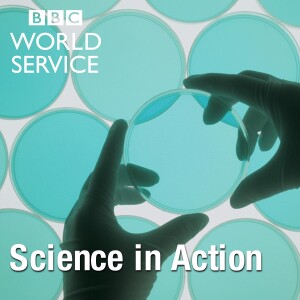
Dr. Clare Jolly and colleagues have been looking at how the first of the major covid variants – alpha - evolved to be more transmissible. Whilst a lot of attention has been on the spike binding areas of the virus and the effectiveness of antibodies from either vaccine or prior infection, their preprint paper this week reports how the virus evolved an ability to inhibit our bodies innate virus response once it has infected a cell.
Prof David Shugar and colleagues have been studying the conditions that led to the tragic rock and ice avalanche in February in Chamoli, Uttarakhand. 27 million cubic meters of rock and ice broke off the steep mountainside and plummeted almost 2km down into the valleys below. Using satellite, seismic and video data the scientists have investigated the sequence of events that led to the tragic deaths of 204 people in the floods that followed.
It was a thankfully rare combination of geography and geology and events, but highlights the care that should be taken when building the growing number of hydroelectric plants in high mountainous areas.
But avalanches don’t just happen in mountains. A year before in a canyon under the sea near the outflow of the Congo river, a sediment avalanche rumbled on for almost 2 days along some 1,100km of the ocean floor. And as Prof Pete Talling describes, whilst it didn’t trigger a tsunami, it did sever cables supplying internet connectivity between South Africa and Nigeria.
And the BBC’s Samara Linton reports on research into a type of DNA you perhaps haven’t heard of – Z-DNA. It winds the other way to what we consider normal DNA, and scientists are finally beginning to understand its role in many human diseases, including cancer, with some future promise of novel therapeutics.
Presented by Roland Pease
Produced by Alex Mansfield.
(Image: Getty Images)
Presenter: Roland Pease
Producer: Alex Mansfield
view more
More Episodes
Why are Covid-19 cases rising in Hong Kong?
 2022-03-10
2022-03-10
 2022-03-10
2022-03-10
Covid -19 origins
 2022-03-03
2022-03-03
 2022-03-03
2022-03-03
Reforming the ‘China Initiative’
 2022-02-24
2022-02-24
 2022-02-24
2022-02-24
Bone repair from Covid-19 vaccine technology
 2022-02-17
2022-02-17
 2022-02-17
2022-02-17
Inside Wuhan's coronavirus lab
 2022-02-10
2022-02-10
 2022-02-10
2022-02-10
Identifying a more infectious HIV variant
 2022-02-03
2022-02-03
 2022-02-03
2022-02-03
The roots of Long Covid
 2022-01-27
2022-01-27
 2022-01-27
2022-01-27
Tonga eruption – how it happened
 2022-01-20
2022-01-20
 2022-01-20
2022-01-20
Have we got it wrong on Omicron?
 2022-01-13
2022-01-13
 2022-01-13
2022-01-13
Corbevax – A vaccine for the world?
 2022-01-06
2022-01-06
 2022-01-06
2022-01-06
2021: The year of variants
 2021-12-30
2021-12-30
 2021-12-30
2021-12-30
Omicron – mild or monster?
 2021-12-23
2021-12-23
 2021-12-23
2021-12-23
Omicron’s rapid replication rate
 2021-12-16
2021-12-16
 2021-12-16
2021-12-16
Can the weather trigger a volcano?
 2021-12-09
2021-12-09
 2021-12-09
2021-12-09
Omicron, racism and trust
 2021-12-02
2021-12-02
 2021-12-02
2021-12-02
Deliberately doomed dart
 2021-11-25
2021-11-25
 2021-11-25
2021-11-25
The end for coal power?
 2021-11-18
2021-11-18
 2021-11-18
2021-11-18
Bambi got Covid
 2021-11-11
2021-11-11
 2021-11-11
2021-11-11
Jet fuel from thin air
 2021-11-04
2021-11-04
 2021-11-04
2021-11-04
Can we still avoid climate catastrophe?
 2021-10-29
2021-10-29
 2021-10-29
2021-10-29
012345678910111213141516171819
Create your
podcast in
minutes
- Full-featured podcast site
- Unlimited storage and bandwidth
- Comprehensive podcast stats
- Distribute to Apple Podcasts, Spotify, and more
- Make money with your podcast
It is Free
- Privacy Policy
- Cookie Policy
- Terms of Use
- Consent Preferences
- Copyright © 2015-2024 Podbean.com



